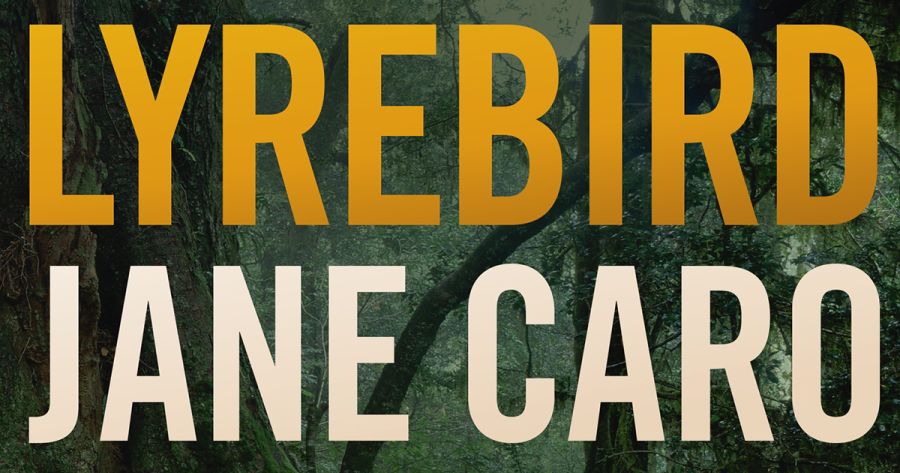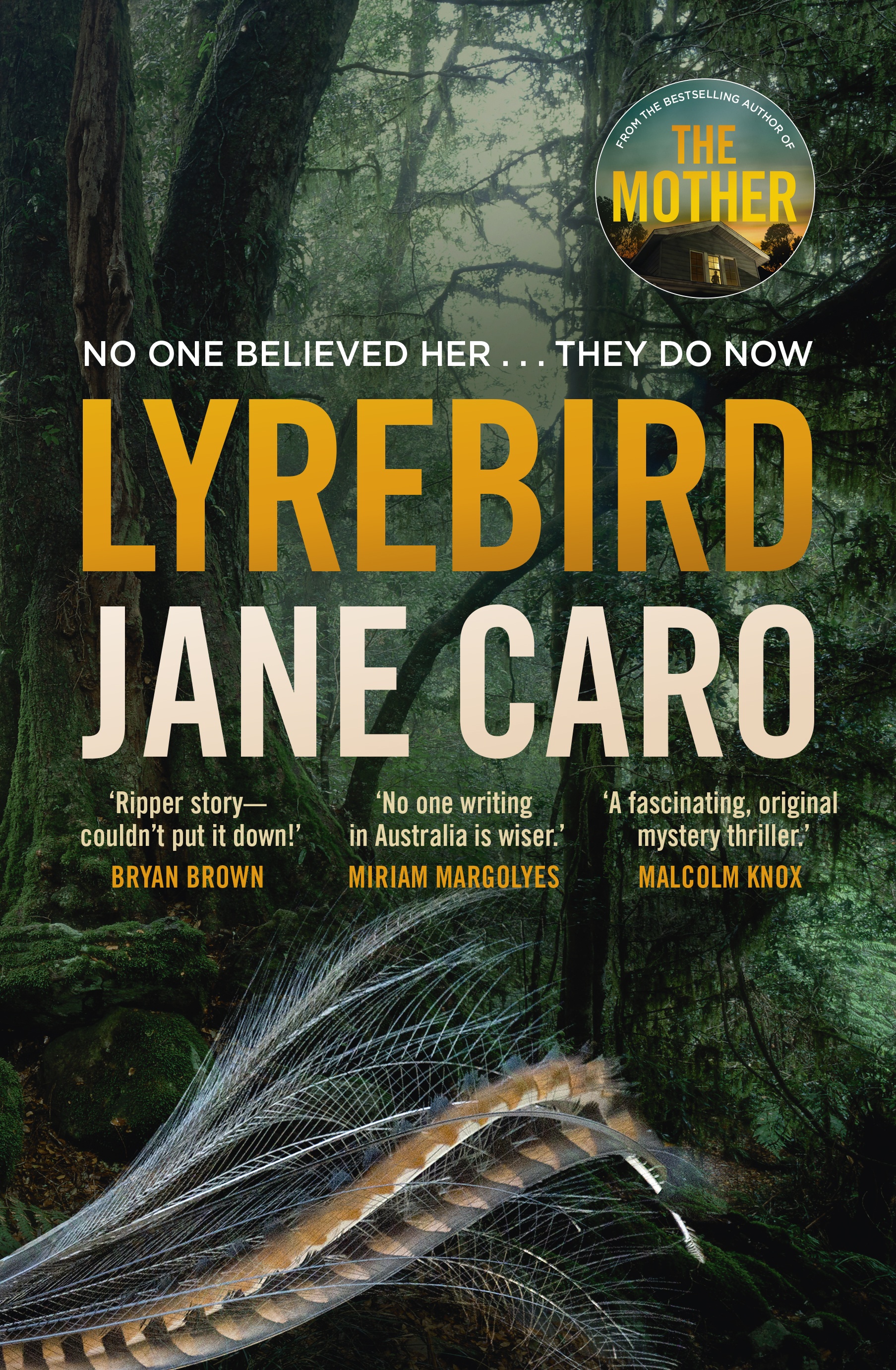
- Free Article: No
- Contents Category: Fiction
- Review Article: Yes
- Article Title: The half of it
- Article Subtitle: Jane Caro’s crimate novel
- Online Only: No
- Custom Highlight Text:
Crime fiction is one of the most popular genres worldwide. It caters for a variety of audiences: readers who launch themselves into an intense competition with the detective for who is going to identify the villain first; those who enjoy being thrilled from the comfort of their armchairs; and those who like to be immersed in the social and political issues that arise from confronting investigations. Author of the acclaimed The Mother (2022), Walkley Award-winning journalist and social commentator Jane Caro returns with a second crime novel, Lyrebird, that will appeal to crime fiction enthusiasts interested in delving into major issues of our times, such as gender violence and climate change. The titular bird first appears in the Prologue, when student ornithologist Jessica Weston films its mating dance and song in the remote New South Wales Barrington Tops National Park. Suddenly, a lyrebird mimics an unknown woman screaming for her life in what sounds like Spanish. Terrified, Weston goes to the nearest police station but nobody accepts her video as evidence that a crime has been committed, apart from a junior police detective, Megan Blaxland, who is then asked to close the case. The ‘lyrebird case’ is ignored for twenty years until a landslip reveals a woman’s skeleton in the Burraga Swamps, exactly where the lyrebird danced. Now a retired senior sergeant, Blaxland returns to the police force as a consultant to reopen the case. Blaxland teams up with her original partner, Philip Arlott, and a small team of eager young cops. She is also helped by Weston, who, in the meantime, has become a biology professor and is also the mother of a rebellious daughter, fifteen-year-old climate activist Sheridan. Soon, other bodies are discovered in the Burraga Swamps and the search for a possible serial killer exposes horrific crimes, such as illegal sex work and human trafficking, as bushfires close in on the investigators and suspects.
- Book 1 Title: Lyrebird
- Book 1 Biblio: Allen & Unwin, $34.99 pb, 368 pp
- Book 1 Cover Small (400 x 600):

- Book 1 Cover (800 x 1200):

- Book 1 Readings Link: https://www.readings.com.au/product/9781761471537/lyrebird--jane-caro--2025--9781761471537#rac:jokjjzr6ly9m
While The Mother was a powerful tale of coercive control and domestic violence, Lyrebird is an exposé of exploitative sex work that victimises foreign women, especially illegal migrants to Australia. The crimes investigated in Lyrebird are not crimes against the environment per se, but the setting of the murder allows Caro to tackle environmental issues and climate change in contemporary Australia. The bushfire as a plot device also appears in other recent crime stories set in Australia, such as Jane Harper’s The Dry (2016), Chris Hammer’s Scrublands (2018), and James Delargy’s Into the Flames (2024). In Caro’s novel, it becomes an opportunity for exploring the lack of resources for agencies responsible for managing natural areas and for educational institutions, and, more generally, the absence of convincing political action against climate change. All this takes place, Caro suggests, amid the indifference of the Australian population – apart from minority groups and the younger generation, represented in the novel by Sheridan.
Lyrebird is a powerful addition to the increasing number of ‘crimate novels’, as crime fiction scholar Stewart King defines them. These are crime stories that interrogate issues of environmental damage and ecological injustice and expose the violent effects on people and the environment that some criminal acts can have. Other examples are The Healer (2010), by Finnish author Antti Tuomainen, and Mark Alpert’s The Doomsday Show (2022).
The lyrebird’s mimicry of human terror serves as a narrative device and as a metaphor for the suffering and damage of human action: the lyrebird’s cry and the fire act as a mirror of humanity’s crimes against fellow human beings and nature itself.
The novel is also notable for its close depiction of the characters involved in the investigation, especially female characters. As the Acknowledgements detail, Caro interviewed disability and women’s advocates, policy writers, and LGBTQ inclusive practice trainers to help her draw a number of secondary characters with sensitivity and care, including Coco, a beautiful trans brothel owner, and Nan Farrow, a young woman with a disability. The novel is populated by compelling women at different stages of life. Weston is a single parent managing a teenage daughter who treats any restrictions as a ‘human rights issue’. As a young policewoman, Blaxland did not have the courage to pursue the investigation, but she is now a confident elderly woman who does not enjoy retirement as much as she thought she would. She jumps at the chance to solve a case that has haunted her for a long time. On the other hand, Samira Kumar is an intelligent policewoman at the beginning of her career who lacks self-confidence because of her age and gender, and in this way echoes Blaxland’s younger self. In addition to being a crime story that denounces gender violence, Lyrebird is a celebration of the power of female bonds and support.
The crime story concludes in the aftermath of the fire, even though hope remains. As Weston tells her daughter: ‘Life is tenacious.’ Some loose ends are left on purpose to highlight the difficulty of completely understanding people’s motivations and behaviours. This is a refreshing alternative to CSI-style investigations where nothing is left unexplained and everything is revealed by science. As Blaxland says in the final pages of the novel, we never know ‘the half of it’.


Comments powered by CComment